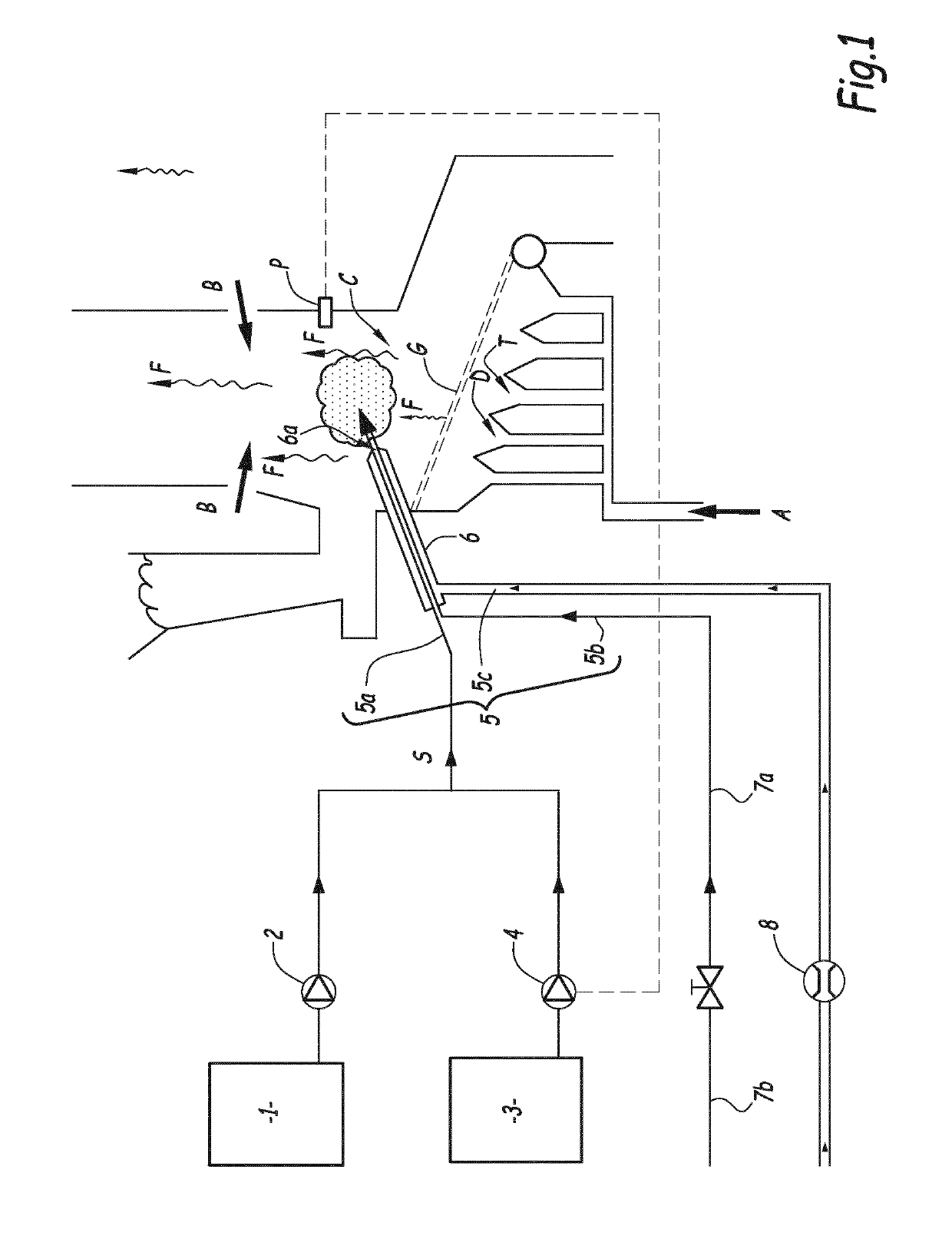Boiler cleaning process, corresponding device and boiler
a technology for cleaning process and boiler, applied in combustion process, fuel additives, combustion treatment, etc., can solve the problems of reducing the overall efficiency and performance of the boiler, reducing the availability of facilities and the lifetime of the affected exchanger, and reducing the efficiency and performan
- Summary
- Abstract
- Description
- Claims
- Application Information
AI Technical Summary
Benefits of technology
Problems solved by technology
Method used
Image
Examples
Embodiment Construction
[0056]FIG. 1 shows a boiler equipped with a cleaning device that will be outlined later. The boiler has a combustion chamber C where fumes F resulting from the combustion of fuels are emitted. In the example of FIG. 1, the combustion, in particular of waste or biomass, is done on a grate G installed in the combustion chamber C, primary air A for the primary combustion of the fuels being injected below the grate, if applicable in a staged manner via distribution boxes including a second primary air injection box, referenced D in FIG. 1, and a third primary air injection box, referenced T in FIG. 1. Secondary air B can be injected in the combustion chamber C, in a zone of the latter which, in the example of FIG. 1, is situated above the grate G, the secondary air B being supplied through walls of the combustion chamber: the fumes F, which are produced in a so-called lower part of the furnace of the combustion chamber C, where the primary combustion develops and which, in the example o...
PUM
 Login to View More
Login to View More Abstract
Description
Claims
Application Information
 Login to View More
Login to View More - R&D
- Intellectual Property
- Life Sciences
- Materials
- Tech Scout
- Unparalleled Data Quality
- Higher Quality Content
- 60% Fewer Hallucinations
Browse by: Latest US Patents, China's latest patents, Technical Efficacy Thesaurus, Application Domain, Technology Topic, Popular Technical Reports.
© 2025 PatSnap. All rights reserved.Legal|Privacy policy|Modern Slavery Act Transparency Statement|Sitemap|About US| Contact US: help@patsnap.com

